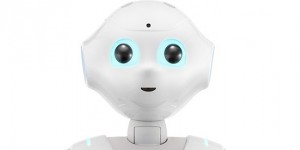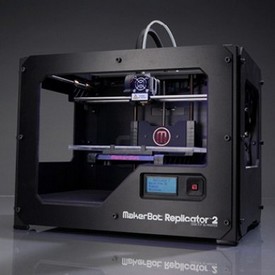Please join the HS/HSL on Tuesday, December 1st from 4:00 – 6:00 pm for the opening reception of Joseph Sheppard’s exhibit, The Human Figure, Anatomical Drawings. You can RSVP to events@hshsl.umaryland.ed or call 410-706-7545. For more information on the exhibit click here.
Opening Reception: The Human Figure, Anatomical Drawings
November Technology Brown Bag Forum: Data Management Plan Tool
Join the HS/HSL on Friday November 20th from 12 – 12:45 pm for our monthly Technology Brown Bag Forum. This month, we are discussing the Data Management Plan Tool. The Data Management Plan Tool was developed in response to a growing need for managing the life cycle of research data found in funding requirements and global expectations for open science. Join us to discuss what the Data Management Plan Tool is, why it is an important resources, and how to use it to manage grant funded data.
The Human Figure, Anatomical Drawings exhibit by Joseph Sheppard
Joseph Sheppard’s current exhibit “The Human Figure, Anatomical Drawings” will be on display November 1, 2015 through March 31st, 2016 in the Frieda O. Weise Gallery on the first floor of the Health Sciences and Human Services Library at the University of Maryland, Baltimore. On display for the first time, the exhibit features detailed drawings of anatomy found in several of his published books. His work, deeply rooted in realism, captures the detail and beauty in the human figure. Click here for more information.
NIH releases article-level, field-independent citation metric
Click here to read about Relative Citation Ratio, a new metric that uses citation rates to measure influence at the article level.
Tech Brown Bag at HS/HSL: 3D Printing in Health Sciences
Technology Brown Bag Forum at the Health Sciences & Human Services Library: 3D printing in health sciences, with special guest Dr. Gene Shirokobrod
3D printing in health sciences is becoming more and more common. Prosthetic limbs, drugs, and medical models are just a few of the uses and innovations. Join us for our next Technology Brown Bag as we explore 3D printing use cases connected to the UMB community. We will hear from special guest, Dr. Gene Shirokobrod, a faculty member from the UMB School of Medicine who co-founded a local company that produces a 3D printed physical therapy device, arc, for postural support.
Thursday, October 29, 2015
Health Sciences & Human Services Library
Distance Ed Room
Noon to 12:45pm
Celebrate National Medical Librarians Month at the HS/HSL
The HS/HSL will be providing free snacks on Tuesday October 27th at 4:00 pm in celebration of National Medical Librarians Month. Come by the library, have a snack, and meet some of the librarians at the HS/HSL!
Halloween Candy Chemistry Webcast 10/29
Join the HS/HSL for “Halloween Candy Chemistry: Caramels, Gummies, Jellies, and Candy Corn” webcast at HS/HSL on Thursday, October 29 at 1:00 pm in Room LL05, on the lower level of the library. Learn that not all caramels are the same, the difference between gummy and jelly candies, what candy corn is made of, and more … This is a webcast of American Chemical Society presentation.
Notable Tech Trends: Robots Have Arrived

“Pepper” created by Softbank Robotics Corporation
The movie, Robot and Frank, describes the future in which the elderly have a robot as their companion and also as a helper that monitors various activities that relate to both mental and physical health. People’s lives in the movie are not particularly futuristic other than a robot in them. And even a robot may not be so futuristic to us much longer either. As a matter of fact, as of June 2015, there is now a commercially available humanoid robot that is close to performing some of the functions that the robot in the movie ‘Frank and Robot’ does.
A Japanese company, SoftBank Robotics Corp. released a humanoid robot named ‘Pepper’ to the market back in June. The Pepper robot is 4 feet tall, 61 pounds, speaks 17 languages and is equipped with an array of cameras, touch sensors, accelerometer, and other sensors in his “endocrine-type multi-layer neural network,” according to the CNN report. The Pepper robot does not clean the house or take care of the children. It was designed to be a companion to humans. The Pepper robot was priced at ¥198,000 ($1,600). The Pepper owners are also responsible for an additional ¥24,600 ($200) monthly data and insurance fee. While the Pepper robot is not exactly cheap, it is surprisingly affordable for a robot. This means that the robot industry has now matured to the point where it can introduce a robot that the mass can afford.
Robots come in varying capabilities and forms. Some robots are as simple as a programmable cube block that can be combined with one another to be built into a working unit. For example, Cubelets from Modular Robotics are modular robots that are used for educational purposes. Each cube performs one specific function, such as flash, battery, temperature, brightness, rotation, etc. And one can combine these blocks together to build a robot that performs a certain function. For example, you can build a lighthouse robot by combining a battery block, a light-sensor block, a rotator block, and a flash block.
By contrast, there are advanced robots such as those in the form of an animal developed by a robotics company, Boston Dynamics. Some robots look like a human although much smaller than the Pepper robot. NAO is a 58-cm tall humanoid robot that moves, recognizes, hears and talks to people that was launched in 2006. Nao robots are an interactive educational toy that helps students to learn programming in a fun and practical way.
Noticing its relevance to STEM education, some libraries have acquired robots and are making them available to library patrons. Westport Public Library provides robot training classes for its two Nao robots. Chicago Public Library lends a number of Finch robots that patrons can program to see how they work. Faculty and students at University of Texas Arlington Libraries can check out several Telepresence Robots.
But robots can fulfill many other functions as well. For example, robots can be very useful in healthcare. A robot can be a patient’s emotional companion just like the Pepper. Or it can provide an easy way to communicate for a patient and her/his caregiver with physicians and others. A robot can be used at a hospital to move and deliver medication and other items and function as a telemedicine assistant. It can also provide physical assistance for a patient or a nurse and even be use for children’s therapy.
Humanoid robots like Pepper may also serve at a reception desk at companies. And it is not difficult to imagine them as sales clerks at stores. Robots can be useful at schools and other educational settings. At a workplace, teleworkers can use robots to achieve more active presence. Universities and colleges can offer a similar telepresence robot to online students who want to virtually experience and utilize the campus facilities or to faculty who wish to offer their office hours when they are away from the office. Not all robots do or will have the humanoid form as the Pepper robot has. But as robots become more and more capable, we will surely get to see more robots in our daily lives.
Federal Government Excludes Oral History Interviews From Mandatory IRB Reviews
The US Department of Health and Human Services recently ruled that, “Oral history, journalism, biography, and historical scholarship activities that focus directly on the specific individuals about whom the information is collected” are specifically excluded from human subject regulation.
Click for more information.
National Library of Medicine Informatics Lecture Series – Use of Clinical Big Data to Inform Precision Medicine, Nov. 4
National Library of Medicine Informatics Lecture Series
Title: Use of Clinical Big Data to Inform Precision Medicine
Speaker: Joshua Denny, MD
Date: Wednesday, November 4, 2015
Time: 2:00 pm – 3:00 pm
Location: Lister Hill Center Auditorium
This talk will be broadcast live and archived at http://videocast.nih.gov/
Abstract: Precision medicine offers the promise of improved diagnosis and more effective, patient-specific therapies. Typically, clinical research studies have been pursued by enrolling a cohort of willing participants in a town or region, and obtaining information and tissue samples from them. At Vanderbilt, Dr. Denny and his team have linked phenotypic information from de-identified electronic health records (EHRs) to a DNA repository of nearly 200,000 samples, creating a ‘virtual’ cohort. This approach allows study of genomic basis of disease and drug response using real-world clinical data. Finding the right information in the EHR can be challenging, but the combination of billing data, laboratory data, medication exposures, and natural language processing has enabled efficient study of genomic and pharmacogenomic phenotypes. The Vanderbilt research team has put many of these discovered pharmacogenomic characteristics into practice through clinical decision support. The EHR also enables the inverse experiment – starting with a genotype and discovering all the phenotypes with which it is associated – a phenome-wide association study (PheWAS). PheWAS requires a densely-phenotyped population such as found in the EHR. Dr. Denny’s research team has used PheWAS to replicate more than 300 genotype-phenotype associations, characterize pleiotropy, and discover new associations. They have also used PheWAS to identify characteristics within disease subtypes.
Brief Bio: Joshua Denny, MD is an Associate Professor in the Departments of Biomedical Informatics and Medicine at Vanderbilt University Medical Center. A primary interest of his lab has been development of the PheWAS method applied to EHRs to rapidly uncover genetic pleiotropy and highlight potential drivers of genetic associations with endophenotypes. He helps lead efforts for local and network pharmacogenetics implementation activities. He is part of the NIH-supported Electronic Medical Records and Genomics (eMERGE) network, Pharmacogenomics Research Network (PGRN), and Implementing Genomics in Practice (IGNITE) networks. He is past recipient of the American Medical Informatics Association New Investigator Award, Homer Warner Award, and Vanderbilt Chancellor’s Award for Research. Dr. Denny remains active in clinical care and in teaching students. He is also a member of the National Library of Medicine Biomedical Library and Informatics Review Committee.
Sign Language Interpreters will be provided. Individuals with disabilities who need reasonable accommodation to participate in this lecture should contact Ebony Hughes 301-451-8038 Ebony.Hughes@nih.gov or the Federal Relay (1-800-877-8339).
Event contact:
Jane Ye, Ph.D
Division of Extramural Programs
National Library of Medicine, NIH
301-594-4882
yej@mail.nih.gov



